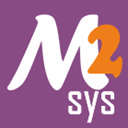Top Windows Subsystem for Linux (WSL) Alternatives for Developers
Windows Subsystem for Linux (WSL) has become an indispensable tool for developers, particularly those working with web development and open-source projects. It allows users to leverage Bash, common Linux utilities (like sed, awk), and many Linux-first tools (such as Ruby and Python) directly on Windows. While WSL provides an excellent bridge between Windows and Linux environments, it might not always be the perfect fit for every workflow or preference. This article explores the best Windows Subsystem for Linux (WSL) alternative options available for developers seeking different approaches or more specialized functionalities.
Best Windows Subsystem for Linux (WSL) Alternatives
If you're looking to expand your development toolkit beyond WSL or simply explore other robust solutions for integrating Linux-like environments into your Windows setup, these alternatives offer diverse features and approaches to meet your needs.

Cygwin
Cygwin is a Unix-like environment and command-line interface for Microsoft Windows, making it a strong Windows Subsystem for Linux (WSL) alternative. It provides native integration of Windows-based applications and data, offering features like ANSI color support, a command line, compatibility layers, and support for portable Linux, Python, and SSH. Cygwin is Free and Open Source, running exclusively on Windows.

MinGW
MinGW ("Minimalistic GNU for Windows") is a port of the GNU Compiler Collection (GCC) and GNU Binutils, offering a complete Open Source programming toolset. As a developer-focused Windows Subsystem for Linux (WSL) alternative, MinGW provides essential compiler and developer tools. It is Free and Open Source, available across Windows, Linux, and BSD platforms, making it a versatile choice for compiling native Windows applications.

BitNami Application Stacks
BitNami Stacks simplify the deployment of popular open-source software by bundling applications with all necessary dependencies. This makes it a practical Windows Subsystem for Linux (WSL) alternative for quick setup of development environments. Key features include one-click installation, LAMP stacks, package installing, PHP, Ruby, server management, web server tools, and WordPress. BitNami Stacks are Free and Open Source, supporting Mac, Windows, Linux, and Web platforms.

MSYS2
MSYS2 is an independent rewrite of MSYS, built on modern Cygwin and MinGW-w64, aiming for better interoperability with native Windows. It serves as an excellent Windows Subsystem for Linux (WSL) alternative for those needing a robust command line/bash environment and regular updates, often integrated with an IDE. MSYS2 is Free and Open Source, specifically designed for Windows.

Turnkey Linux
TurnKey Linux provides a super simple way to deploy open-source web apps and server-side applications in the cloud, VM, or bare metal. As a Windows Subsystem for Linux (WSL) alternative, it focuses on providing pre-configured operating systems and virtualization solutions, making it ideal for rapid deployment of server environments. TurnKey Linux is Free and Open Source, available for Linux and Web platforms.

OSBoxes
OSBoxes offers ready-to-use VMware and VirtualBox Linux/Unix guest operating systems. For users who prefer full-fledged virtual machines over a subsystem, OSBoxes presents a viable Windows Subsystem for Linux (WSL) alternative. It supports Mac, Windows, and Linux platforms, providing pre-built virtual environments for various needs.

Virtual Machines
The broader concept of Virtual Machines simplifies developers' configuration work through lightweight and powerful environments, allowing more time for coding. As a comprehensive Windows Subsystem for Linux (WSL) alternative, virtualization offers complete isolation and control over the operating system environment. They are Free and Open Source, supporting Mac, Windows, Linux, and Web platforms.
Exploring these alternatives to Windows Subsystem for Linux (WSL) provides developers with a range of options, from lightweight Unix-like environments to full-blown virtual machines. Each has its strengths, catering to different preferences and project requirements. We encourage you to explore these tools to find the best fit for your specific development needs and workflow.